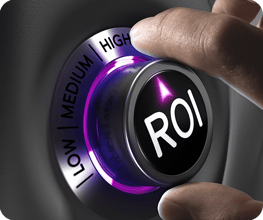
Strengthening Retailer Partnerships Through Enhanced Data and Insights
The most contentious relationship in business is the one between perennial partners: the retailer and their supplier.
You would think that because of the critical nature of each party’s mission, their partnership would be the closest and most committed in all of business.
Yet they continue to view each other as rivals, antagonists, and even opponents in their quest for success in capturing the attention and engagement of consumers. Despite depending on each other for financial survival, it often seems they are bent on mutually destroying revenue and profitability.
SO, WHAT IS THE PROBLEM?
The historical animosity between them is rooted in many of the mission-critical processes needed to run each other’s business at peak efficiency and effectiveness. For CPGs, the challenge is to build a collaborative relationship to address the top problems and challenges they face.
Here are some examples of what we are talking about:
1. Product Assortment
The decision about what products to sell to the consumer is difficult for both sides of the channel. Retailers know the consumer intimately, but the manufacturer/supplier has the funding and strength to do massive research into what the consumers want. Retailers deal with multiple suppliers of similar products, so the decision for which brand, color, flavor, size, or specification mix is nothing short of rocket science.
- Product assortment management now ranks as the third highest issue for Revenue Growth Management organizations. (HPM 2023 Survey on Trade Promotion)
2. Price
So much effort goes into price management by both sides of the channel, and the pressures to maintain margins and grow revenues continue to create conflict in the business relationships.
- In my experience working with CPG companies and trade promotion management vendors globally, I have found that pricing errors account for 63% of all deductions taken by retailers.
3. Promotion
Probably the most difficult and frustrating issue is the funding, planning, execution, and analysis of trade channel promotions. To this day, retailers and suppliers alike suffer huge failures in ROI for what is the second-largest line item in a consumer products company’s financials.
- “Over half of all trade promotions result in little to no sales lift … " The Ultimate Guide to Pricing and Promotion, NielsenIQ
4. Inventory Management
Both retailers and suppliers continue to see more than 40% of their promotions suffering from out-of-stock conditions, with continual finger-pointing at the other side.
5. Supply Chain and Logistics
The pandemic showed us all how weak and broken the global and local supply chains can be. Ongoing, logistics tend to play a huge role in the measurement of the relationship between retailer and supplier.
- New product launches fail at a rate of 95% in 2024, according to BPlan Writer, which means little relief from supply and inventory logjams.
THE FUTURE IS BRIGHT
While it might be hard to erase all the more than 200 years of mercantile issues, concerns, and problems each party faces, the good news is that this negative trend is turning positive.
The most important reason for this surge in stronger collaborative partnerships between suppliers and retailers is better, more accurate, and trusted point-of-sale (POS) data. While shared POS data has been in the industry for years, the availability of it in near real time is growing and the level of advanced technology for automatically collecting, cleansing, and harmonizing it—with solutions such as Retail Velocity’s VELOCITY® retail data platform—is enhancing its usability and value across the enterprise.
"Expanding the amount of content and increasing the frequency of accurate, reliable POS and inventory data availability opens an entirely new vista of store and product performance."
Retailers feel the pressure of competition with the growing scope of e-commerce vendors, so they must become more creative in making the in-store shopping experience the preferred choice of the consumer’s shopping process. This means that both the retailer and the supplier can see almost immediately how well products are selling and enable more rapid responses in promotions and consumer engagement strategies.
With a persistently high failure rate of promotions attributed to insufficient stock on the shelves, it is crucial to have a concerted effort between the retailer and the supplier to rectify stock shortages. Otherwise, they may need to consider cancelling costly promotions, which can ultimately lead to consumer/shopper frustration and dissatisfaction, potentially resulting in them choosing another product or even worse—stopping shopping at the store.
Expanding the amount of content and increasing the frequency of accurate, reliable POS and inventory data availability opens an entirely new vista of store and product performance. For the retailer, sharing more data within the POS uploads tells a better story about how, why, when, and where the product is sold. Most of the time, the retailer already reaps the benefit of POS analyses, but what we are seeing is a less reluctant sharing of POS data and in return, a willingness by the manufacturer/supplier to share a much broader array of intelligence about product performance, not only for that retail partner in their markets but also across a wider geographical landscape and consumer audience.
For instance, as consumer products manufacturers enhance the quality of advanced AI-driven promotion optimization and predictive planning analytics, sharing this information results in more precise and trustworthy intelligence. This, in turn, reduces the failure rate of promotions and maximizes the effectiveness of trade fund spending. Better data gathered from all retail and channel customers can enable better analysis of patterns in consumer shopping preferences and eventual buying habits. While the retailer may have some of this intelligence, it is generally limited to their own internal store data.
TOGETHER, YOU CAN ACHIEVE MORE—MUCH MORE
Sitting down together with the manufacturer/supplier willing to share this data enables a more effective joint planning of promotions, smarter management of inventory, and a more resilient and efficient supply chain. Being more efficient and effective with the trade funds means less over-expenditures and more frequent promotions. This is good for both the retailer and the manufacturer/supplier and is a trend we are seeing more every day.
“We have expanded the number of promotions we are able to run,” says the category manager of a major western U.S. grocery chain. "Dollar for dollar, we’ve increased our net volume of sales of [this vendor’s] promoted product groupings and have increased our promotion ROI by more than 45%.”
In addition, we are seeing a break in the longstanding failure rates due to inventory outages.
“Last year we expanded our POS data sharing by offering daily downloads at virtually no cost to the vendor,” says the head of merchandising at a major cosmetics retail chain. “We now have twice-monthly meetings with vendors who share their internal data, and we reduced our out-of-stock conditions by more than half over previous year.”
Advanced POS data analysis can be used to identify inventory trends, compare with logistical data to uncover potential shipping issues, and facilitate product transfers between stores in major markets. This collaboration helps prevent empty shelves during promotions—the death knell to any promotion outcome!
THE POWER OF POS DATA
Most major consumer products manufacturers have long relied on syndicated data providers to include POS data with their analyses of promotional performance. However, what is delivered to the client by these providers can be inaccurate and incomplete because the POS data is limited and often averaged based on certain markets and geographies. It is also typically very expensive. As a result, the trend is pointing toward independent access of POS data directly from the retailers. Some retailers continue to charge for this data, and many more offer it at cost or free.
"Direct POS data—when collected, cleansed, and harmonized through a software solution
like VELOCITY®—can be made available within 24 hours."
While the syndicated data provider services are critically important to the manufacturer/supplier for professional causal analyses, the reporting is typically latent, as much as weeks (and sometimes months) after the promotional event. Direct POS data—when collected, cleansed, and harmonized through a software solution like VELOCITY®—can be made available within 24 hours. This allows manufacturers and suppliers to respond almost immediately to any sales or inventory issues, particularly when it seems that inventory will be depleted during a promotion.
CLOSING
Having the ability to react quickly to sales opportunities and inventory or supply chain issues benefits both the manufacturer/supplier and the retailer. Because of these increased collaborative relationships, the level of efficiency and effectiveness of all the above-bulleted issues is resulting in smarter consumer engagement and increased revenues and profitability for both parties.
These are real examples of successful collaboration between retailers and their suppliers created through a stronger, more effective partnership. Seeing product and promotion movement in-store and online through a more detailed lens, both the retailer and the manufacturer/supplier benefit across all lines of business; but the real strength in this relationship will be in the increased focus on achieving dramatically higher consumer engagement through better retail data and actionable insights.
Want to learn more about how Retail Velocity can empower your organization with high-quality data and insights that can transform your retailer partnerships? Contact us today.
About the Author
 Rob Hand is the founder and CEO of Hand Promotion Management, a consulting company providing domain expertise across more than 25 consumer-facing industries. Focused on consumer products and retail, he has a 45-year history of helping consumer goods manufacturers improve their trade promotion spending ROI, performance analytics, retail execution, consumer engagement efficiency, and marketing effectiveness.
Rob Hand is the founder and CEO of Hand Promotion Management, a consulting company providing domain expertise across more than 25 consumer-facing industries. Focused on consumer products and retail, he has a 45-year history of helping consumer goods manufacturers improve their trade promotion spending ROI, performance analytics, retail execution, consumer engagement efficiency, and marketing effectiveness.
Rob is a frequent podcaster, blogger, and speaker on the topics of revenue growth management and business process innovation. He is the author of the recently published and popular book “The Invisible Economy of Consumer Engagement,” which outlines how consumer products goods companies can achieve the highest value in both promotion ROI and consumer engagement.



